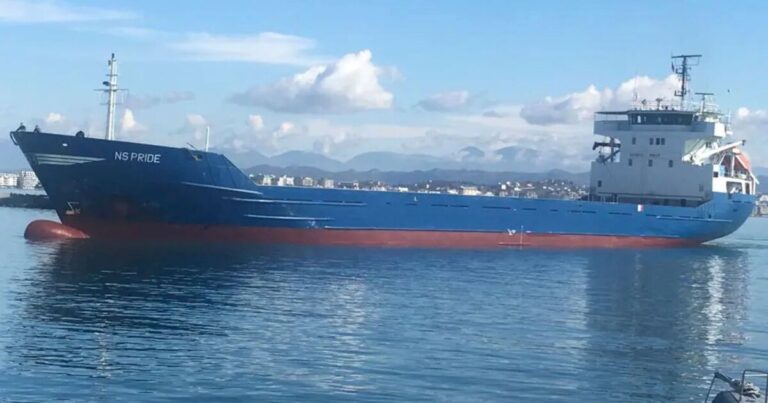An unsuspecting civilian ship, by the name of NS Pride, was reportedly damaged after it collided with an explosive device during a voyage in the Black Sea on Sunday.
The vessel, which was determined to be a Belize cargo ship, was near the port of Chornomorsk, close to Odesa, when it struck the unidentified explosive device. According to the Kyiv Independent, the ship was not carrying any cargo at the time of the explosion.
It was also reported that the ship remained afloat and there were no casualties among the crew, and that the ship did not take on any water as a result of the explosion. “A civilian vessel exploded with an unspecified explosive device,” Dmytro Pletenchuk, a spokesman for the Ukrainian Navy, said in a statement.
“As for the consequences, there are no victims among the crew; the vessel received minor damage, and it is currently being inspected,” added Pletenchuk. “It will probably continue to move on its own.”
“Unfortunately, as a result of the actions of the Russian occupiers, a large number of explosive objects remain in the sea,” the spokesperson added.”And it is impossible to predict 100% in the sea, where there is constant movement, of course.
“We are doing everything necessary to protect civilian vessels from such dangers,” he added. Ukrainian news outlet Militarny speculated that the explosion was caused by an unexploded part of the Shahed kamikaze drone, which had been destroyed the day before.
According to the outlet, the explosive device could also have been a naval mine. Previous reports have indicated that the Black Sea has been a site of several major confrontations during the three-and-a-half-year war between Russian and Ukrainian forces.
Due to the conflict, Ukraine has reportedly been forced to significantly reduce its use of the waterway for exporting goods.
DON’T MISS:
Lines are drawn
The explosion comes days after the Lithuanian military installed anti-tank obstacles on unused roads at border checkpoints with Russia and Belarus. The obstacles are known as “dragon teeth” – pyramid-shaped concrete anti-tank obstacles – and were erected as part of the Baltic Defense Line, a planned string of defenses along the Baltic countries’ borders with Russia and Belarus.
Lithuania, Latvia, and Estonia, all of whom are NATO countries, have expressed increasing concerns over the Russian threat since they invaded Ukraine in 2022. Lithuanian military chief Raimundas Vaiksnoras said: “The installed barriers are only part of a large, integrated picture.”
“We are starting from the tactical level — specific obstacles on the border — and later we will combine the entire engineering plan into one conceptual system,” he added. The “dragon teeth” have been set up at the unused Sumskas, Lavoriskes, Raigardas, and Latezeris border crossings with Belarus, as well as at the Romaniskes border checkpoint with Russia’s Kaliningrad exclave, amongst other areas.
The Lithuanian military hopes to limit the use of unused roads as part of long-term plans to reduce the threat of a ground-based Russian invasion. Lithuania has been increasing security measures over the past few years. Some of these steps included blocking and fortifying a bridge over the Nieman River, which links the country with Kaliningrad.


